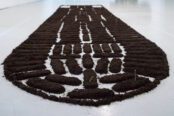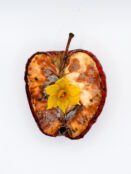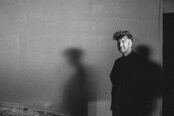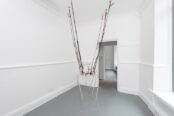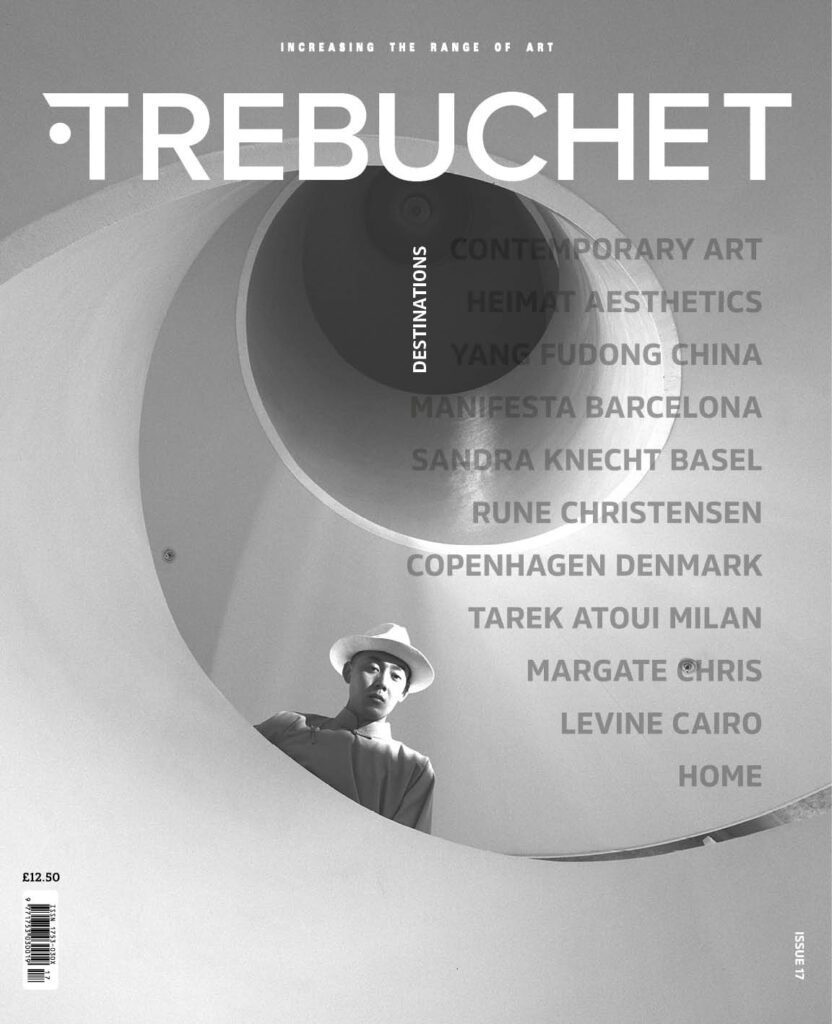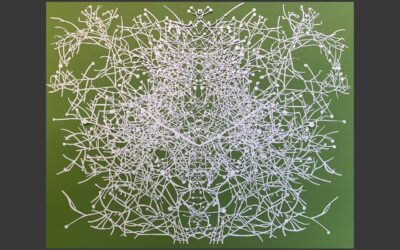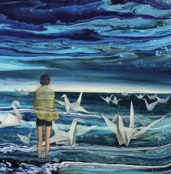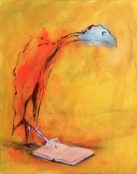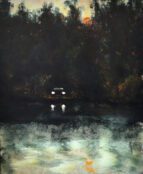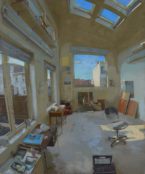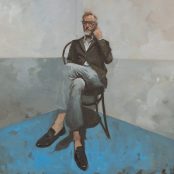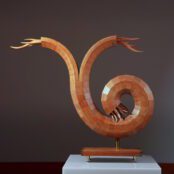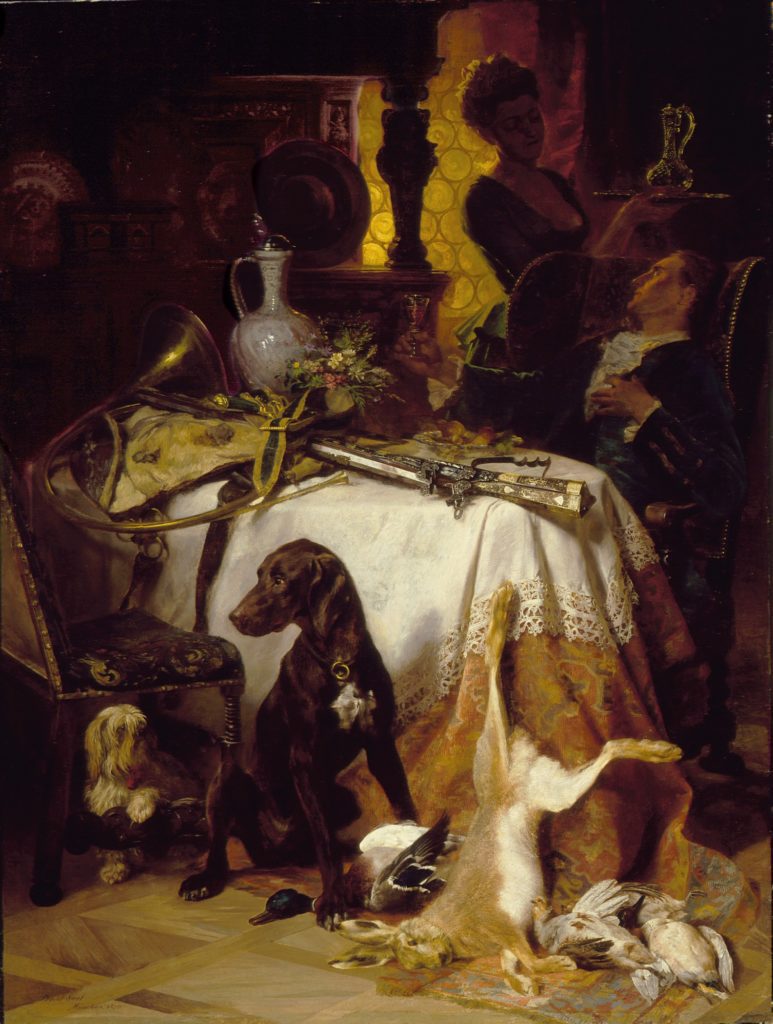In the context of contemporary art, Jingjing Xu has developed a distinctive body of work in moving-image and installation art. Rather than employing direct narrative, her works place contemporary issues within symbolic and at times mythological frameworks. Through story-driven symbolism, Xu’s practice resonates with that of established artists such as Charmaine Poh and Gabi Dao. Like them, she draws upon the performative legacies of Joan Jonas and Joseph Beuys, while also engaging with the moving-image practices of artists such as Brian Catling and Yang Fudong. Through this synthesis she has cultivated a visual poetics characteristic of the twenty-first century, one defined by a dramatic narrative sensibility. Notably, Xu’s visual language displays a high degree of internal coherence and self-containment. Viewers are drawn into the distinctive rhythm and syntax she constructs, invited to experience an affective space shaped by the interplay of image and emotion.
This generation of artists also encourages reflection on how they differ from their predecessors. Figures such as Nam June Paik, Cindy Sherman, Bill Viola and Dara Birnbaum once examined the materiality of media from a McLuhanesque perspective, questioning what television is, what cinema can do and how media shape consumption. In contrast, contemporary artists like Xu employ cinematic language with native fluency. Having grown up in an era defined by memes, social media and promotional imagery, they create within a visual vocabulary already saturated with commercial aesthetics, auteur cinema and representational ideology.
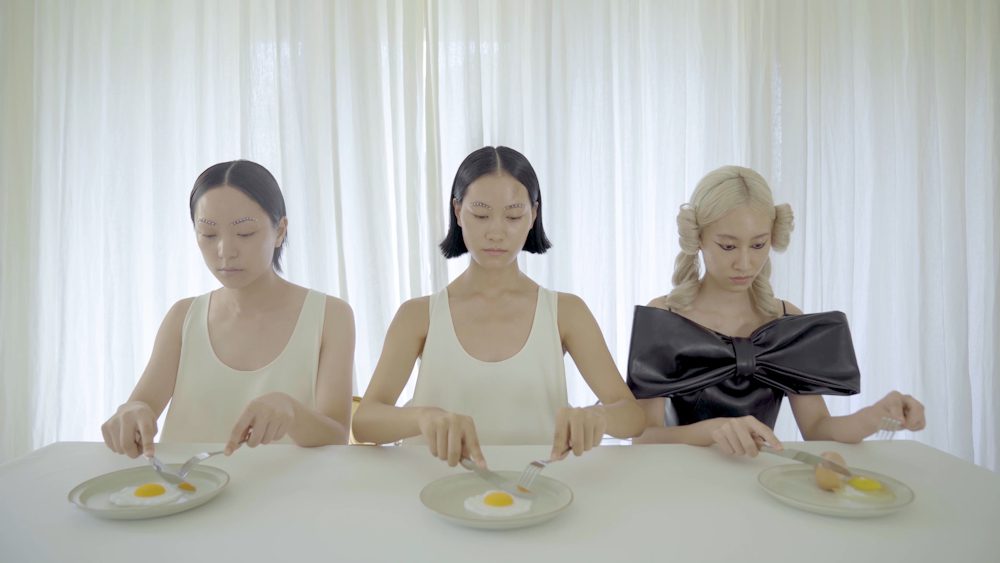
This transformation carries considerable significance. Traditional single-channel media such as television networks, national radio and newspapers have fragmented into countless sources. Nevertheless, Xu’s work reminds us that this multiplicity of platforms has not eliminated dominant discourses. The forms of media have expanded, yet the underlying structures of power and representation persist. It is within this tension that her work becomes most compelling and, at the same time, most ambiguous.
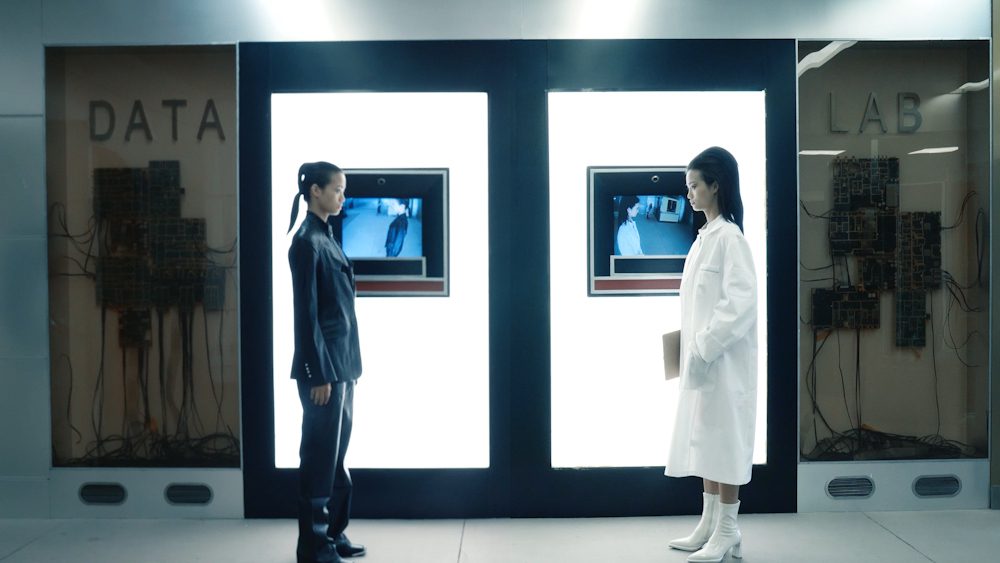
Xu describes her practice as an exploration of how women reconstruct their identities while redefining notions of belonging and freedom. Her early works Who Am I (2022) and Co-exist (2021) address the representation of femininity more directly. While, her more recent piece Sisyphus (2025) turns towards existential concerns. In this work, a slender, dancer-like figure moves through surreal environments, bringing together fragments of contemporary life and a mythologised symbolic logic. Conceptually, Xu constructs a dialogue between lived experience and mythic imagination. The accompanying narration, which is integral to the work, questions the nature of being and describes itself as a ‘cipher for the effort of existence’.
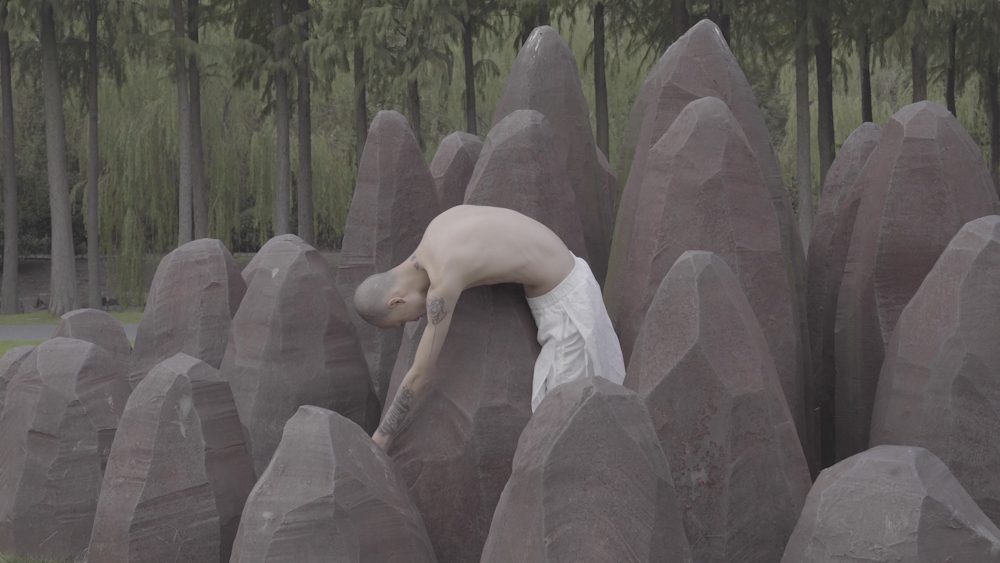
At this point her practice becomes intellectually stimulating. A number of questions arise. Is the narrator a reliable voice? Is Xu critiquing the narcissistic tendencies of self-reflective thought, or is she complicit in them? Her work maintains this unresolved tension, a distance that signals a growing complexity in her approach. One might ask whether such ambiguity produces critical insight or instead represents an aesthetic retreat. When myth-making becomes the dominant creative method, there is a risk that female experience is aestheticised rather than examined within its social and structural realities.
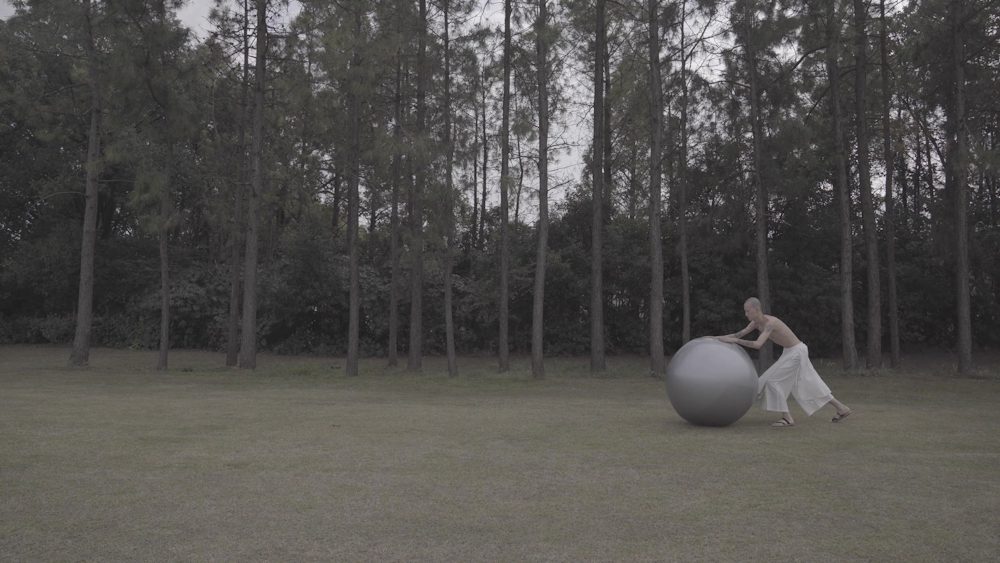
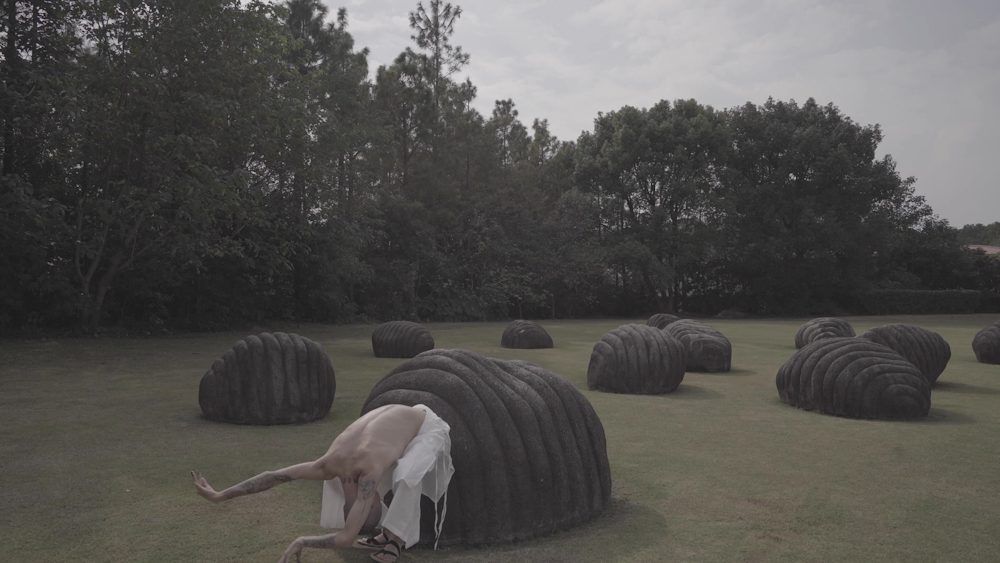
From a technical perspective, Xu’s artistic development is evident. Her later moving-image installations demonstrate refined cinematography and a more sophisticated control of tone. Holding an MA in Fashion Marketing from the University of Leeds (2022) and another in Fashion, Film and Digital Media from the University of the Arts London (2024), she possesses an academic foundation for understanding how media construct narrative and, by extension, ways of being. This background is reflected in the precision and compositional confidence of her work. Yet it also raises a question of synthesis. Has her practice truly achieved a cross-disciplinary integration capable of creating a new visual language, or does it still hover between the aesthetic polish of commercial imagery and the conceptual ambitions of contemporary art?
It is possible that Xu’s future work will further blur the boundaries between artwork and audience, transforming the viewer from a passive observer into an active participant. Judging from her current trajectory, she appears particularly comfortable in crossing such thresholds. Her moving-image works have been exhibited internationally across both art and film contexts, including the British Film Festival in London in 2023 and exhibitions in Italy, China, Japan and the United Kingdom. This cross-disciplinary presence reflects her interest in how moving images operate between cinema and contemporary visual art. It also demonstrates the fluency with which her generation moves between formats. Yet this very fluidity invites reflection. When boundaries are so easily dissolved, how can critical tension be preserved?
In the longer term, Xu’s artistic trajectory continues to develop. At present we can observe an artist exploring the construction of identity through media. Her works operate both as subjects in themselves and as reflections of her own growth. She clearly belongs to a generation of artists who raise narrative questions about perception, appropriation and existence, while searching for authenticity in an era where that very notion is continually appropriated and diluted. The contradiction between rejecting and desiring authenticity perhaps drives some of the most affecting artistic practices of our time.
Whether Xu’s mythological framework ultimately reveals or conceals these questions remains uncertain, and only sustained engagement with her future work will provide an answer. For now she stands as an artist of technical skill and conceptual ambition, a distinctive voice within the field of contemporary art. Some critics believe that these ambitions will propel her practice forward, while others suggest that they may instead turn inward and become a form of self-consuming echo. In any case, this remains a question that deserves our continued attention.
Exhibitions
2025 Saturn’s Garden, Hackney Gallery, London
2024 Fashion Film Festival Amsterdam, Tuna Yilmaz Studio, Amsterdam
2024 Replicant, Luan Gallery, Beijing
2024 New York City International Fashion Film Festival, NYC Visuals, New York
2024 Canadian International Fashion Film Festival, Roger Gingerich, Toronto
2024 Like that, like that (Solo Exhibition), Luan Gallery, Beijing
2023 Milan Shorts Film Festival, Fuoricinema, Milan
2023 Roma International Fashion & Short Film Festival, Massimo Ivan Falsetta, Roma
2023 British Film Festival, Big Ben Studio, London
2023 ASVOFF17, Diane Pernet, Diane Pernet, Paris
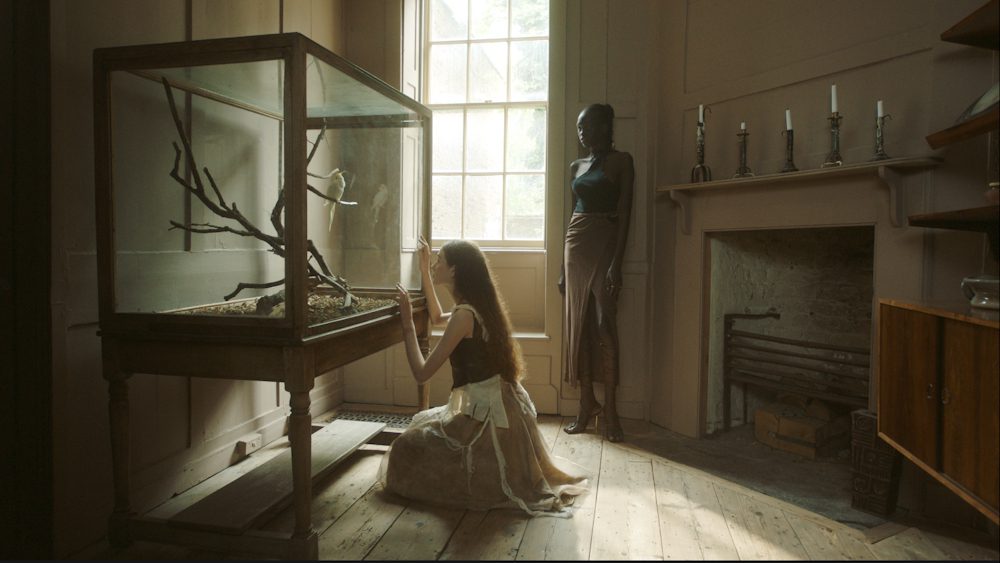
Images courtesy of the Artist © Jingjing Xu
This review is part of a supported series on emerging artists including Jingjing Xu. Edited by Kailas Elmer
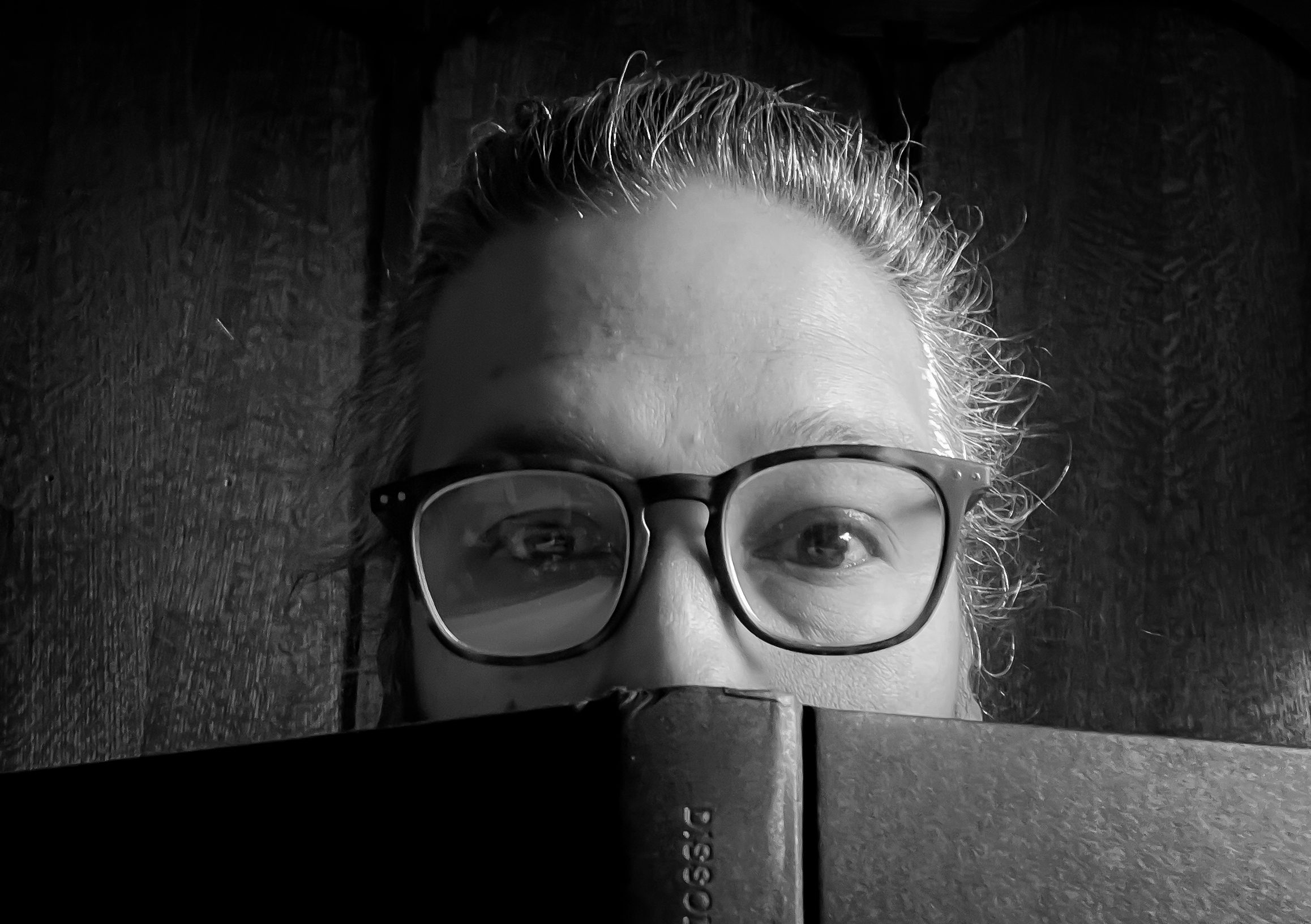
Ex-London based reader of art and culture. LSE Masters Graduate. Arts and Culture writer since 1995 for Future Publishing, Conde Nast, Wig Magazine and Oyster. Specialist subjects include; media, philosophy, cultural aesthetics, contemporary art and French wine. When not searching for road-worn copies of eighteenth-century travelogues he can be found loitering in the inspirational uplands of art galleries throughout Europe.


